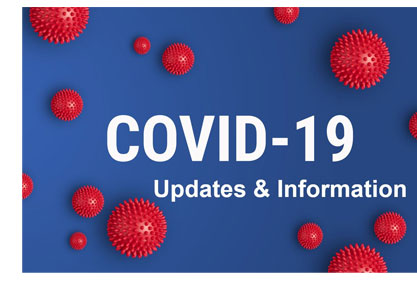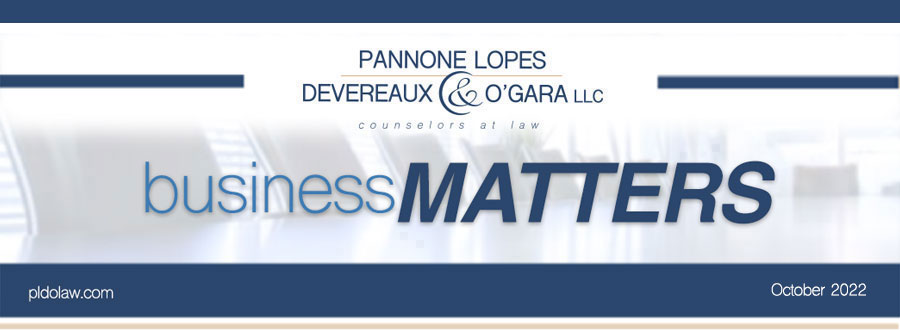THIS ISSUE'S HEADLINES
Apple’s Concerning New Text Message Feature
The Benefit of Pass-Through Entities
Stay Informed — PLDO COVID-19 Resource Library

APPLE’S CONCERNING NEW TEXT MESSAGE FEATURE
 Apple recently released iOS16 for the iPhone. This newest release allows iPhone users running iOS16 to edit and unsend text messages sent between other iOS16 users. While this may be welcome news for those of us who make embarrassing typos or otherwise hit the send button prematurely, it opens the door for some potential legal risks and issues that can arise. Apple recently released iOS16 for the iPhone. This newest release allows iPhone users running iOS16 to edit and unsend text messages sent between other iOS16 users. While this may be welcome news for those of us who make embarrassing typos or otherwise hit the send button prematurely, it opens the door for some potential legal risks and issues that can arise.
The new features are fairly straightforward. Users can edit a text message up to five times within 15 minutes of sending it. The recipient will receive a notification that a message was edited and can also see a history of how the message was edited. As for the unsending feature, users will have only two minutes to unsend a message, and the recipient will be able to see that the message was unsent (but will not be able to recover or see it once it has been unsent).
It is too early to tell how these features will impact businesses and how their employees communicate, but one can foresee a host of potential issues that could arise. First, the unsend feature could make the investigation of sexual harassment or cyberstalking more challenging. Rather than a clear history of conversations between harasser and victim that an employer or police could review, there will now be a muddled travel of messages that could make it more difficult to get to the bottom of a harassment or cyberstalking claim. The feature may also embolden harassers into sending offensive messages and then unsending them in an effort to cover their tracks.
Another concerning issue relates to certain businesses and government agencies who are required by law or regulation, such as the Securities and Exchange Commission or under a state’s public records law, to maintain records. If employees use iOS16 and unsend business-related text messages, there is a substantial open question of whether that would constitute a “deleted” communication in violation of applicable laws or regulations that require communications to be preserved for a specific period of time.
These are just a couple of potential risks that this new iOS16 feature poses to employers. It has long been considered a best practice that text messaging in the workplace be used sparingly and for only non-substantive communications such as logistics or scheduling. Employers should also start giving some thought to how they might address or regulate employees’ use of this new unsending and editing feature while conducting official company business. It would be wise to consider reinforcing or adopting policies that prohibit employees from using text messaging to conduct substantive business and to require that email be used instead.
If you have questions or would like further information, please contact PLDO Partner Brian J. Lamoureux at 401-824-5155 or email bjl@pldolaw.com. Attorney Lamoureux is a member of the firm’s litigation, employment, and cybersecurity teams.
[back to top]

THE BENEFIT OF PASS-THROUGH ENTITIES
 Why do pass-through entities such as LLCs taxed as partnerships remain the entity of choice for most closely held businesses? Why do pass-through entities such as LLCs taxed as partnerships remain the entity of choice for most closely held businesses?
The primary benefit of operating a business through a pass-through entity, such as an LLC taxed as a partnership, is that the income generated by the business is not subject to double taxation. Instead, the taxable income of the LLC passes through to its members, who receive a Schedule K-1, and is taxed at the individual member level. Shareholders of C corporations, in contrast, are subject to double taxation on dividend distributions and in connection with the sale of the corporation’s assets, unless the “Section 1202 gain exclusion” applies. Another advantage of the LLC structure is that members of the LLC receive a tax basis step-up when they are allocated taxable income, thereby reducing the amount of taxable gain on a subsequent sale of their member interest. For example, the members of an LLC earning $1,000 in 2022, which distributes $350 to pay taxes, will receive an increase in their tax basis equal to $650. Over time, this basis increase can add up and will be very beneficial on a subsequent sale of the business. Because there is no pass-through of gains with the C corporation structure, shareholders do not receive the same benefit.
The LLC/pass-through structure offers a number of other benefits vis-ą-vis C and S corporations. Very briefly, these benefits include the following:
- Holders of an LLC interest are given basis credit for debt of the LLC, which potentially allows members to write off losses in excess of their capital investment. Neither C nor S corporation shareholders receive basis credit for entity-level borrowing.
- Generally, LLCs taxed as partnerships afford greater flexibility in planning, as contributions and distributions of appreciated property to and from the LLC are tax-free. In contrast, contributions of appreciated property to a C corporation in exchange for stock must meet the various requirements of Code §351 to avoid being treated as a taxable sale. Code §351 is relatively inflexible, as it requires the contributing group to hold at least 80% of the corporation’s stock immediately after the contribution of such property. Further, nearly all distributions of appreciated property from a C corporation are taxable.
- Members of LLCs can recover tax basis through distributions of cash without triggering dividend tax treatment. A C corporation’s cash distribution is fully taxable regardless of how large a shareholder’s tax basis is in the stock.
- LLCs taxed as partnerships provide more flexibility in connection with the issuance of inventive equity on a tax-favored basis.
- LLCs may have preferred classes of equity, thereby allowing maximum flexibility in distributing cash to the owners. Only common equity is permitted in the case of S corporation.
- The Code and Treasury Regulations generally allow for special allocations of profits and loss to LLC owners. Tax allocations are not available in the case of C corporations, and the rules are much less flexible with respect to allocations made to S corporation shareholders, i.e., on a per share, per day basis.
- The LLC allows for maximum flexibility in distributing cash, allowing for preferred classes of equity. In contrast, the S corporation only permits common equity.
This article touches on only a few of the many issues to consider in determining the optimal business structure. Your choice of entity influences everything from day-to-day operations to taxes and how much of your personal assets are at risk. The analysis is complex, and there is no one-size-fits-all approach. The optimal entity structure for a particular client will be tailored to the unique facts and circumstances surrounding the business, market conditions, the client’s overall goals for operations and a future sale.
For more information about structuring your business, please contact Attorney Jason P. Jones in PLDO’s Boca Raton, Florida office at 561-362-2030 or email jjones@pldolaw.com.
[back to top]

 STAY INFORMED – PLDO COVID-19 RESOURCE LIBRARY STAY INFORMED – PLDO COVID-19 RESOURCE LIBRARY
PLDO’s team of attorneys continue to add updates and advisories regarding the pandemic and its impact on families, businesses and organizations. To access our COVID-19 Resource Library, click here.
[back to top]
|




 Apple recently released iOS16 for the iPhone. This newest release allows iPhone users running iOS16 to edit and unsend text messages sent between other iOS16 users. While this may be welcome news for those of us who make embarrassing typos or otherwise hit the send button prematurely, it opens the door for some potential legal risks and issues that can arise.
Apple recently released iOS16 for the iPhone. This newest release allows iPhone users running iOS16 to edit and unsend text messages sent between other iOS16 users. While this may be welcome news for those of us who make embarrassing typos or otherwise hit the send button prematurely, it opens the door for some potential legal risks and issues that can arise. Why do pass-through entities such as LLCs taxed as partnerships remain the entity of choice for most closely held businesses?
Why do pass-through entities such as LLCs taxed as partnerships remain the entity of choice for most closely held businesses?